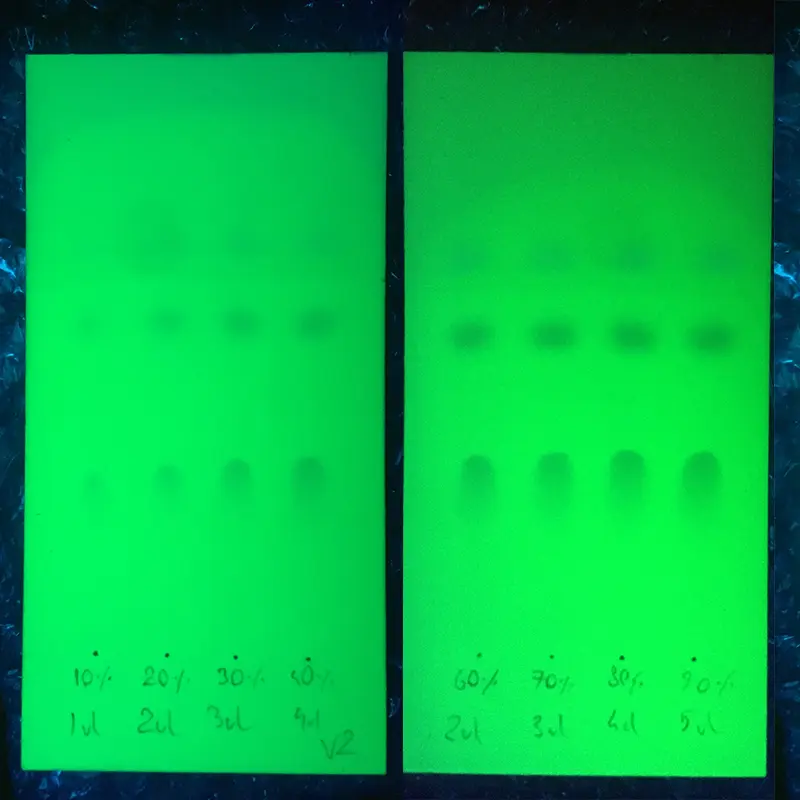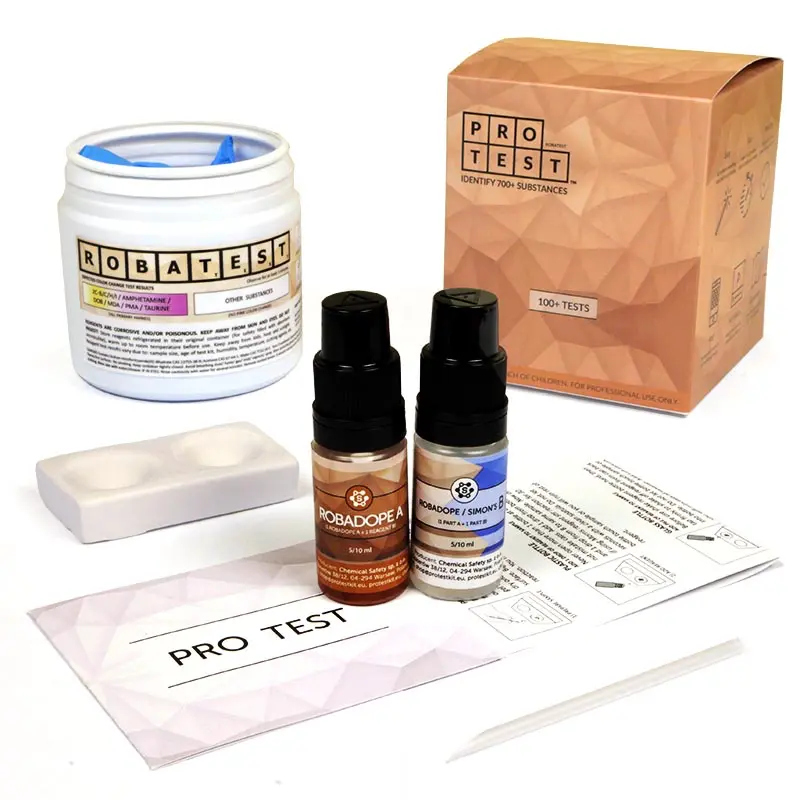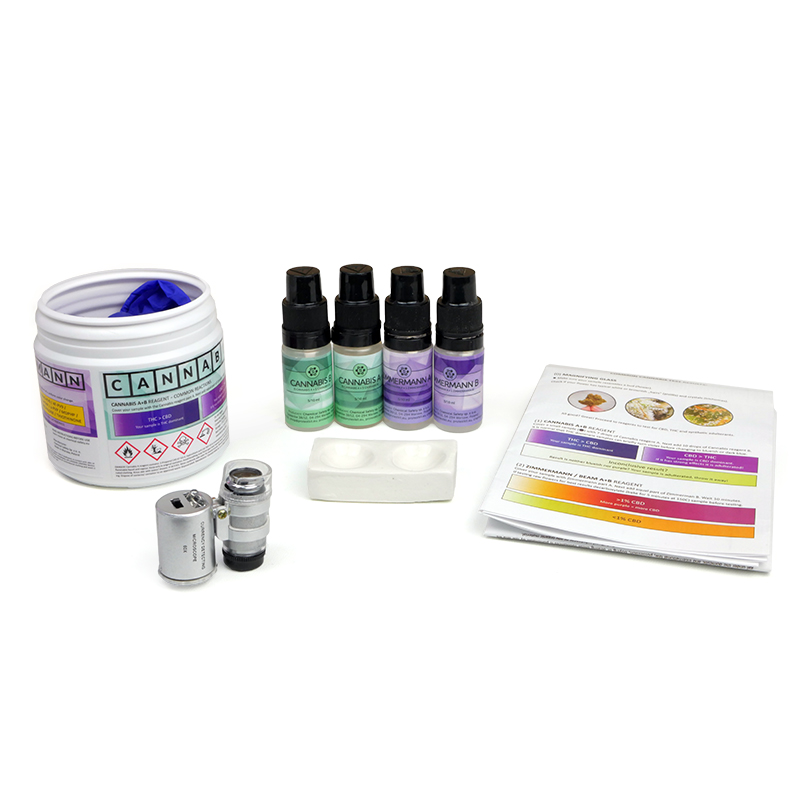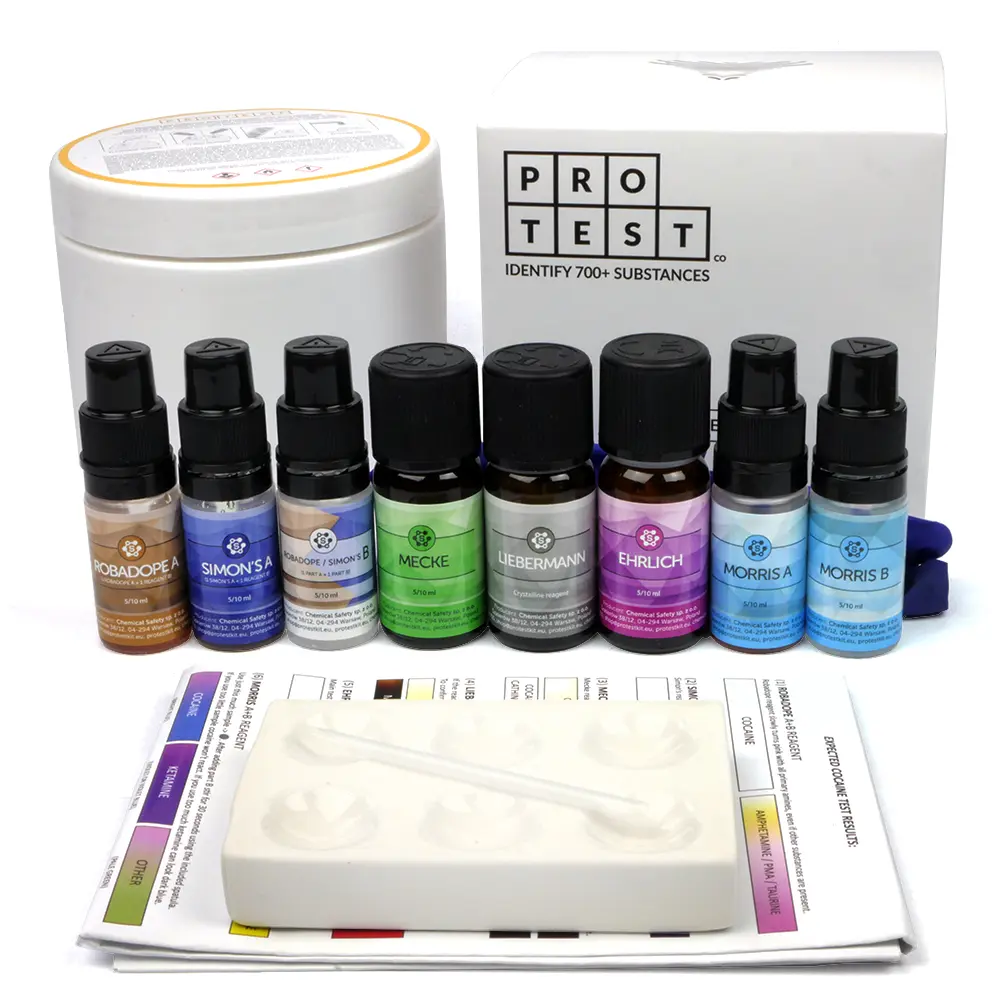How to detect caffeine in amphetamine, cocaine, MDMA and other substances?
Caffeine is one of the most common adulterants found in psychoactive substances. According to EMCDDA reports most of amphetamine in Europe contains mostly caffeine, similarly to most of cocaine. It is mostly found in stimulant drugs, but also in for example ketamine. Caffeine alone is not particularly dangerous, however unknowingly mixing it with stronger compounds can lead to a number of otherwise avoidable risks. To detect caffeine especially usefull is Robadope reagent, available in amphetamine test kit, methamphetamine test kit, MDMA test kit and cocaine test kit. Additionally it’s recommended to use a TLC test kit, which allows checking the number and amount of ingredients in a sample.
Risks of caffeine as an adulterant:
- Dosing error after using substance of higher purity
- Hyperstimulation, sweating, chest pain
- Allergy
Quick test for caffeine presence
Key thing when reagent testing caffeine is Robadope’s reaction time. Primary amines react slowly, often pink/purple shows up after about 2 minutes, or at least then the color change becomes vivid. It is different in the case of caffeine, which instantly causes a deep orange color change.
Caffeine’s reaction with Robadope likely is not unique, which means that false positive results can not be ruled out. What is however certain and confirmed by us is that none of the common psychaoactive compounds reacts the same way. It is therefore safe to assume that the red/orange reaction indicates presence of an adulterant.

Robadope's reagent reactions with caffeine and amphetamine mixed with caffeine (1 min)
Wait for the pink reaction
Detecting caffeine is not everything, after observing the orange hue wait for the main Robadope’s reaction. If you start to see pink or violet, that confirms presence of a primary amine (2C-B, amphetamine, MDA, PMA). If you are testing a sample expected to be one of those, you can confirm whether the main ingredient is present at all. If you are testing a different compound, aside from caffeine you can rule out admixture of e.g. amphetamine, which is particularly useful when testing cocaine or MDMA.

Robadope's reagent reactions with caffeine and amphetamine mixed with caffeine (2 min)
How to detect caffeine and other cuts using TLC
False positives are possible – especially taurine is note worthy as it also causes a pink color change with Robadope reagent. Also phenethylamine (precusor often leftover fro synthesis) can turn Robadope reagent pink (source: https://doi.org/10.3408/jafst.736). As always when using colorimetric reagents it is crucial to remember that there is more substances than colors. We recommend to use a mutliple reagent test kit, or preferably pair reagents with a TLC test kit (Thin Layer Chromatography test kit).
Only by combining reagents with a TLC test it is possible to confirm purity and rule out not only the most common, but all potential cuts. Below we show TLC test results for sample containing cocaine (66%) with 10% caffeine and also ethenzamide. Reagents would neither allow to estimate the % level of cocaine, nor would they detect all adulterants, in this case ethenzamide. Source of the analysis: energycontrol-international.org

Detecting caffeine and other cuts using TLC test kit
Test kits for caffeine and other cuts
The best test kit for caffeine and other cuts is the Full TLC Test Kit combined with the Full Reagent Test Kit. It is however possible to choose a more affordable option, depending on what substance is expected to be tested. We recommend our amphetamine test kit, methamphetamine test kit, MDMA test kit and cocaine test kit. Alternatively it is worth to purchase Robadope ragent if other tests are already at hand.
Reagent Robadope (Robatest):
Full drug checking test kits:
Wynik narkotestu nie oznacza, że próbka jest bezpieczna. Żadna substancja nie jest w 100% bezpieczna.


